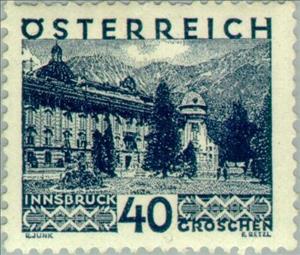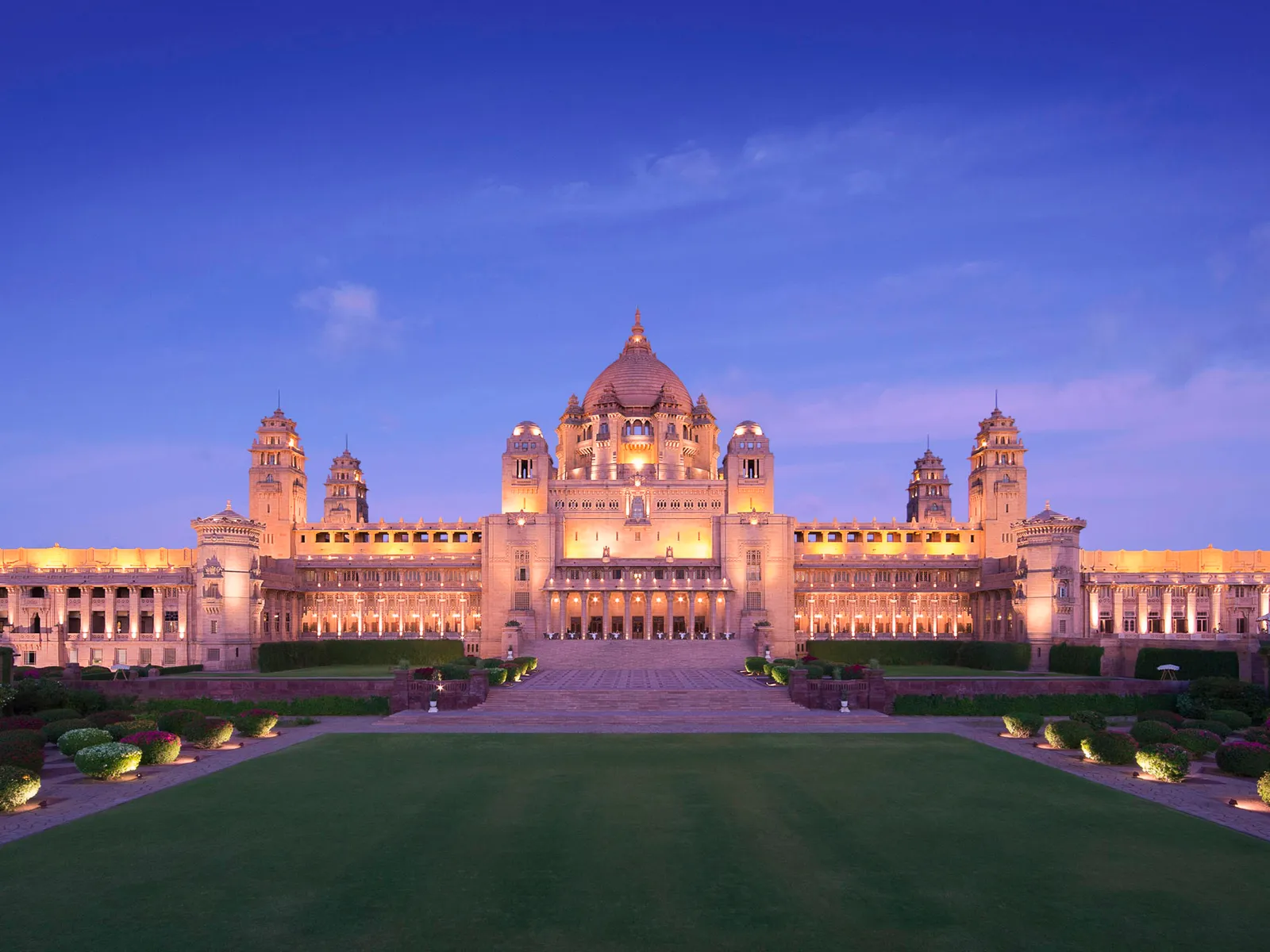Stamp: Old Hofburg, Innsbruck Tyrol - large format (Austria 1929)
Old Hofburg, Innsbruck Tyrol - large format (Austria 1929)
04 November (Austria ) within release Landscapes goes into circulation Stamp Old Hofburg, Innsbruck Tyrol - large format face value 40 Austrian groschen
| Stamp Old Hofburg, Innsbruck Tyrol - large format in catalogues | |
|---|---|
| Michel: | Mi:AT 507 |
| Yvert et Tellier: | Yt:AT 385 |
Stamp is horizontal format.
Also in the issue Landscapes:
- Stamp - Güssing Castle, Burgenland - large format, ochre face value 10;
- Stamp - Hoch-Osterwitz Castle, Kärnten - large format face value 15;
- Stamp - Dürnstein, Lower Austria - large format face value 16;
- Stamp - Traunsee, Upper Austria - large format face value 18;
- Stamp - Hohensalzburg Fortress, Salzburg - large format, maroon face value 24;
- Stamp - Seewiesen, Steiermark - large format face value 30;
- Stamp - Old Hofburg, Innsbruck Tyrol - large format face value 40;
- Stamp - Hohenems, Vorarlberg - large format face value 60;
- Stamp - National Library, Vienna face value 1;
- Stamp - Stefans Cathedral, Vienna face value 2;
Stamp Old Hofburg, Innsbruck Tyrol - large format it reflects the thematic directions:
A landscape is the visible features of an area of land, its landforms and how they integrate with natural or man-made features. A landscape includes the physical elements of geophysically defined landforms such as (ice-capped) mountains, hills, water bodies such as rivers, lakes, ponds and the sea, living elements of land cover including indigenous vegetation, human elements including different forms of land use, buildings and structures, and transitory elements such as lighting and weather conditions. Combining both their physical origins and the cultural overlay of human presence, often created over millennia, landscapes reflect a living synthesis of people and place that is vital to local and national identity. The character of a landscape helps define the self-image of the people who inhabit it and a sense of place that differentiates one region from other regions. It is the dynamic backdrop to people’s lives. Landscape can be as varied as farmland, a landscape park, or wilderness. The earth has a vast range of landscapes, including the icy landscapes of polar regions, mountainous landscapes, vast arid desert landscapes, islands and coastal landscapes, densely forested or wooded landscapes including past boreal forests and tropical rainforests, and agricultural landscapes of temperate and tropical regions.
A palace is a large residence, often serving as a royal residence or the home for a head of state or another high-ranking dignitary, such as a bishop or archbishop. The word is derived from the Latin name palātium, for Palatine Hill in Rome which housed the Imperial residences
A building or edifice is a structure with a roof and walls standing more or less permanently in one place, such as a house or factory. Buildings come in a variety of sizes, shapes and functions, and have been adapted throughout history for a wide number of factors, from building materials available, to weather conditions, to land prices, ground conditions, specific uses and aesthetic reasons. Buildings serve several needs of society – primarily as shelter from weather, security, living space, privacy, to store belongings, and to comfortably live and work. A building as a shelter represents a physical division of the human habitat (a place of comfort and safety) and the outside (a place that at times may be harsh and harmful).



